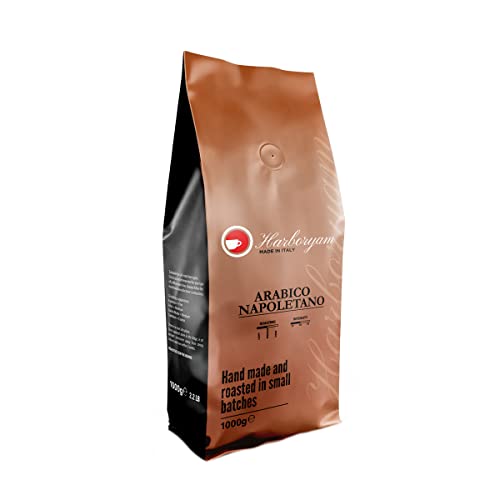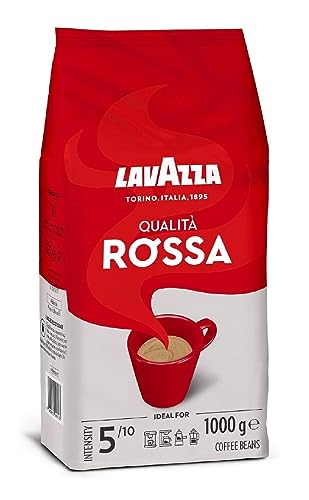10 Things That Your Family Taught You About Best Arabica Coffee Beans …
Arturo Gustafson
2024.12.06 20:26
177
0
본문
 The best arabica coffee beans in the world (more about scientific-programs.science)
The best arabica coffee beans in the world (more about scientific-programs.science)Most people are unaware that the coffee beans in your favorite coffee shop or supermarket aren't arabica coffee beans with free shipping. This type of coffee bean grows best at higher altitudes, and has a softer flavor.
 The terroir (or place of origin) of the coffee beans has a major impact on the taste. This is the reason why single estate arabica coffee beans-origin arabicas are so cherished.
The terroir (or place of origin) of the coffee beans has a major impact on the taste. This is the reason why single estate arabica coffee beans-origin arabicas are so cherished.1. Ethiopian Yirgacheffe
Known for its floral and citrus characteristics This coffee is an old-fashioned. The top quality beans are cultivated on small farms in the Oromia region (formerly Harrar) at altitudes ranging from 1,400 to 2200 meters. The natural process results in the beans to be ripe with a distinct sweetness and berry taste.
The elevations that are high in Yirgacheffe result in the coffee plants to grow slower and allow them to absorb nuances and flavors from the surrounding environment. The region is characterized by a tropical climate, which is ideal for cultivating coffee.
This coffee is available in green beans that have not been roast. They are great for roasters who wish to reveal its essence. Light to medium roasts bring out the citrus, wine and berry flavors. This coffee is great with desserts such as lemon pound cake and chocolate. The floral and herbal notes of this coffee can be enjoyed with savory dishes that are spicy or sour in flavor.
2. Colombian Supremo
Colombian Supremo, a coffee that is renowned for its consistency in flavor and quality is a favorite for coffee lovers of all levels. Supremo beans are renowned for their classic, smooth taste with notes of caramel and citrus.
The size of the beans is an important factor in determining their flavor profile. Supremo coffee beans are large. This bigger size means that the beans will go through Grade 14 or higher sieve perforations which is lower than Excelso.
Colombian Supremo is a coffee with universal appeal. Its premium quality standards, bright acidity, and moderately rich body make it an excellent choice for any brewing technique. This coffee from the Popayan area is grown by farmers that are members of the Colombian Coffee Federation. This association supports more than 500 000 coffee producers. This coffee is an excellent example of the high quality Colombian beans that have made Colombia famous for its top-of-the-line coffees.
3. Jamaican Blue Mountain
Jamaican Blue Mountain coffee is one of the most sought-after gourmet coffees in the world. Its rich, smooth flavor makes it one of its most sought-after varieties. This wet-processed coffee from the Blue Mountains of Jamaica is renowned for its sophistication and soft taste. It's also one of the main ingredients in the coffee liqueur Tia Maria.
The Blue Mountains, with their steep elevations, fertile soils, mild climates and dense clouds, create the perfect conditions for coffee production of top quality. The beans from this tiny region are sought-after the world over and fetch high prices for their rareness.
Jamaican Blue Mountain, as its name suggests, is grown in the Blue Mountain District, a area of 6,000 hectares on the island that is known for its natural beauty and the production of coffee. The area is protected as an official national park. farmers cultivate small quantities of coffee with meticulous care to preserve the distinct characteristics of the beans.
4. Costa Rican Tarrazu
Costa Rican Tarrazu coffee is a coffee lover's delight. It has the perfect balance between acidity and body. The region boasts high altitudes as well as a mineral-rich volcanic soil, which permits the beans to ripen at a slower rate so that they can fully develop their flavor profile.
Many of these farms are recognized for their sustainable practices and strict measures to maintain quality which makes them popular with eco-conscious consumers. Some offer traceability, so that consumers can find out more about the farm that produced their coffee.
One World Roasters' Tarrazu is an excellent example of the region's characteristic flavor profile, displaying notes of vibrant grapefruit and rich dark chocolate. Its medium body is well-rounded and balanced and gives an elegant finish that is sure to please your taste buds.
5. Caturra de Colombia
Caturra is a cultivar of coffee has become an iconic name in Latin America. The variety was first introduced to Brazil as a result of an unnatural alteration of Bourbon. Its production potential is superior to Bourbon however, it requires higher altitudes, resulting in lower yields. The method of mass selection was used to identify parent plants that performed exceptionally well. Bulk seed from these parents was then produced and the process was repeated.
Colombian Caturra has a high yield and is resistant to Coffee Leaf Rust. It is one of the parents of the Castillo variety, developed by Cenicafe as the official plant for their "Colombia sin roya" program designed to revive and revitalize the production of coffee.
This heirloom Caturra, grown at 2,000 meters by farmers in Urrao and was roast by Camber Coffee. Its cup quality displays a lively acidity that is flavored with strawberry, watermelon and citrus.
6. French Roast
For those who want a bold cup of coffee that has smoky and charred notes will love French Roast. This blend combines arabica beans from a variety of regions, and offers rich flavours of chocolate and caramel. The beans are dark-roasted to bring out their natural flavors and oils. This blend is of high quality and will satisfy the most sophisticated taste buds.
These beans are more difficult to cultivate than other coffee varieties because they require specific conditions for climatic growth. The plants require a certain amount of sunshine and rain and must be protected from frost and drought.
Drinking coffee made from these beans can help improve your energy levels and improve your health. These beans are loaded with antioxidants that fight free radicals which can cause chronic diseases such as cancer and heart disease. Additionally these beans are an excellent source of vitamin B5 or pantothenic acid, which is essential for the body to convert food into energy.
7. Ethiopian Gesha
Geisha or Gesha as it is also known, was discovered in Ethiopia's Gori Gesha Forest in the 1930s. It was brought to Panama in the 1960s, where it quickly gained a reputation for its strong floral aromas, full body, and delicate acidity from citric.
Geisha is a pricey coffee variety. It is susceptible to disease and requires high altitudes to grow. The yield of fruit is also lower. These features make it difficult to produce consistently. This, combined with its high score on the cup is what drives the price.
This particular Gesha lot was honey processed. (Not the actual honey, the beans were processed and then dipped into sugar-rich water.) The beans were then moved to a marquee, and then dried for 96 hours through carbonic maceration. This is a unique process which adds to the richness of this extraordinary coffee. It also gives OMA a rich and balanced cup profile with exotic florals, like tea rose and jasmine and delicate citrus and stone fruits.
8. Indonesian Liberica
Most coffee lovers are familiar with two species of the Coffea family: arabica and robusta. The former accounts for 80% of world's coffee direct trade arabica coffee beans, whereas the latter is responsible for 20 percent. There are more than 120 species in the genus and some are less popular than others.
Currently, the most well-known non-arabica species is Coffea excelsa (or var. dewevrei). This variety is found on medium-sized trees in moderate elevations. It produces a teardrop-shaped beans. It is commonly used in blends and can add a distinctive lasting flavor to your drink.
It's not as popular in Southeast Asia as arabica but it still has its niche market. This is because of the religious demand in the region, since Muslims in Malaysia and Indonesia drink coffee following their prayers. Liberica's resistance to rusty coffee leaf and its low caffeine content makes it a viable alternative for those who don't have enough money to invest in arabica.
9. Brazilian Exelsa
Excelsa is resilient and productive, but it requires more care from farmers than other Coffea arabica species or canephora. This is partly due to the asymmetrical size of the bean that is larger than canephora or arabica. It has a longer period of fruiting, and its leaves are larger than other C. liberica types. It can also reach 15m tall and produce an abundance of fruits.
Oliveiro believes it's a pity that the plant is not understood, despite being classified in 2006 as the dewevrei liberica variety. It can be a "really good coffee producer". It's unlikely that the plant will be converted to a coffee that is a commodity without a market. However, for those willing to invest the time and effort into growing it, the benefits are evident: Excelsa beans tend to have lower levels of caffeine than arabica and canephora, and have a thicker mucilage, with less liquid solids.

댓글목록 0